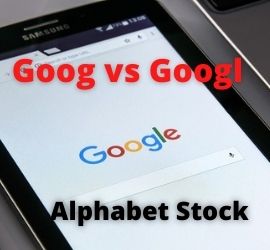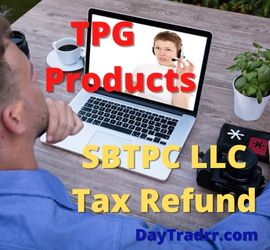Form 2439: Notice to Shareholder of Undistributed Long-Term Capital Gains
 Form 2439 is an IRS tax form required to be issued by RICs, Mutual Funds, ETFs, & REITs. Regulated Investment Companies must report any gains they do not distribute to their shareholders. When the fund company decides to retain these gains, it must pay taxes on behalf of shareholders and report these transactions on Form 2439.
Form 2439 is an IRS tax form required to be issued by RICs, Mutual Funds, ETFs, & REITs. Regulated Investment Companies must report any gains they do not distribute to their shareholders. When the fund company decides to retain these gains, it must pay taxes on behalf of shareholders and report these transactions on Form 2439.
A mutual fund usually distributes all its capital gains to its shareholders. The mutual fund company reports these gains on Form 1099-DIV. However, a fund might choose to keep some of its capital gains and pay a tax on them. When this happens, the mutual fund company will send out Form 2439 to its shareholders. It is an IRS Notice to Shareholders of Undistributed Long-Term Capital Gains.
Form 2439 must be referenced by shareholders on their individual tax returns. Even if they do not take possession of the retained gains, they must report them on their own Form 1040, Schedule D, line 11. A separate form 2439 will be issued for each investment. By law, these forms are to be issued 90 days following the fiscal year-end of the RIC or REIT. Note that some RICs and REITs do not have calendar fiscal years. Always consult the website of the investment or your tax advisor for specific guidance in this area.
IRS Form 2439 – A Deeper Look
Form 2439 is required by the U.S. Internal Revenue Service (IRS) for use by RICs, REITs, ETFs, and Mutual Funds. Form 2439 informs shareholders of long-term capital gains have not been distributed to investors. RICs and Mutual Funds usually distribute all capital gains. Regulations require fund companies to disburse almost all gains to investors in a transaction known as a capital gains distribution. As a result, Form 2439 is not needed or issued very often. However, it is more common in the case of actively managed funds. These funds tend to conduct more trades within their portfolios.
Investors whose shares are held in tax-free accounts, such as an Individual Retirement Account (IRA), may file a Form 990-T. This form allows them to claim a tax refund on the taxes paid by the fund company. Shareholders subject to federal taxation must also adjust the basis for their shares upward. To do so, they first subtract the taxes reported by the fund company on Form 2439 from the capital gains reported on the same form. They should then add that difference to the prior cost basis.
Companies that need to file
Funds tend to accumulate capital gains in the months of November and December, but can generally warn investors with an estimate in advance. Index funds tend to contain more static portfolios and thus produce fewer and more predictable capital gains. Companies that need to file Form 2439 should complete Copies A, B, C, and D for each shareholder for whom the regulated investment company (RIC) or real estate investment trust (REIT) paid tax on undistributed capital gains under section 852(b)(3)(D) or 857(b)(3)(C). Then, they should attach Copy A of all Forms 2439 to Form 1120-RIC or Form 1120-REIT when it is filed at the appropriate IRS service center. Furnish Copies B and C of Form 2439 to the shareholder by the 60th day after the end of the RIC’s or the REIT’s tax year. Retain Copy D for the RIC’s or REIT’s records. (Source: investopedia.com)
What To Do If You Receive a Form 2439
What does it mean? If you have received a Form 2439 and there was a tax paid by the RIC or REIT (see box 2) then you may be entitled to a refund. This is true even if your investment is held in your IRA. Individuals who have already filed their tax returns can file an amendment using Form 1040X. For investments held in an IRA, Form 990-T can be filed.
Report these capital gains even though you don’t actually receive them. However, since the mutual fund paid tax on the gains, you can claim a credit for the taxes they pay. You also need to increase the basis of your mutual fund shares by the difference between these two items:
- Amount of undistributed capital gains you report
- Amount of taxes reported to you as paid
Undistributed capital gains. If your mutual fund sends you a Form 2439: Notice to Shareholder of Undistributed Long-Term Capital Gains increase your basis by the amount of undistributed capital gain that you include in income and reduce your basis by the amount of tax paid by the fund on the undistributed gain (both amounts are reported to you on Form 2439). Finally, don’t forget to claim a tax credit on your 2020 Form 1040 for the amount of tax paid by the fund in 2020.
(Source: hrblock.com & turbotax.intuit.com)
Final Words
The net result of a capital gains allocation is essentially no different to the shareholder than a capital gains distribution. In distribution, the investor who receives a capital gains dividend in cash pays taxes on that gain. If he then reinvests the remainder in new shares, it should create very similar results to the investor who receives a Form 2439 from the fund.
One potential difference between a capital gains allocation and a capital gains distribution has to do with tax brackets. Large funds fall into a higher income bracket. As a result, the fund company likely pays a higher tax rate on the gains that it retains. Conversely, the individual may be subject to a lower tax rate. By reporting the dollar amount paid by the fund company on their individual Form 1040, the shareholder may benefit from the discrepancy between the fund company’s tax rate and their own.
Where Can I Get a Copy of Form 2439
Form 2439 is available on the IRS website.
Next: What is the Difference Between GOOG vs GOOGL Stocks?
 GOOG vs GOOGL – Both are stock ticker symbols for Alphabet (formerly Google). GOOG shares do not have voting rights while GOOGL shares do.
GOOG vs GOOGL – Both are stock ticker symbols for Alphabet (formerly Google). GOOG shares do not have voting rights while GOOGL shares do.
The main difference between the GOOG vs GOOGL stock ticker symbols is voting rights. The two different ticker symbols are associated with two different types of shares. GOOG is the ticker for Alphabet’s C-shares, whereas GOOGL is the ticker for Alphabet’s A-shares. Alphabet Inc is the company that was formerly known as Google.
This share structure was created in order to allow for voting rights and capital rights to be split from each other. The GOOG Class C-shares have no voting rights while GOOGL Class A-shares do. The company created two classes of shares in April 2014.
The reason for the split between the two classes of shares was to preserve the control of founders Larry Page and Sergey Brin. When companies go public, founders often lose control of their company when too many shares are issued. Steve Jobs lost control of Apple before eventually being hired back. There are also class-B shares that have 10x votes per share. These are held by founders and insiders and do not trade publicly. i




